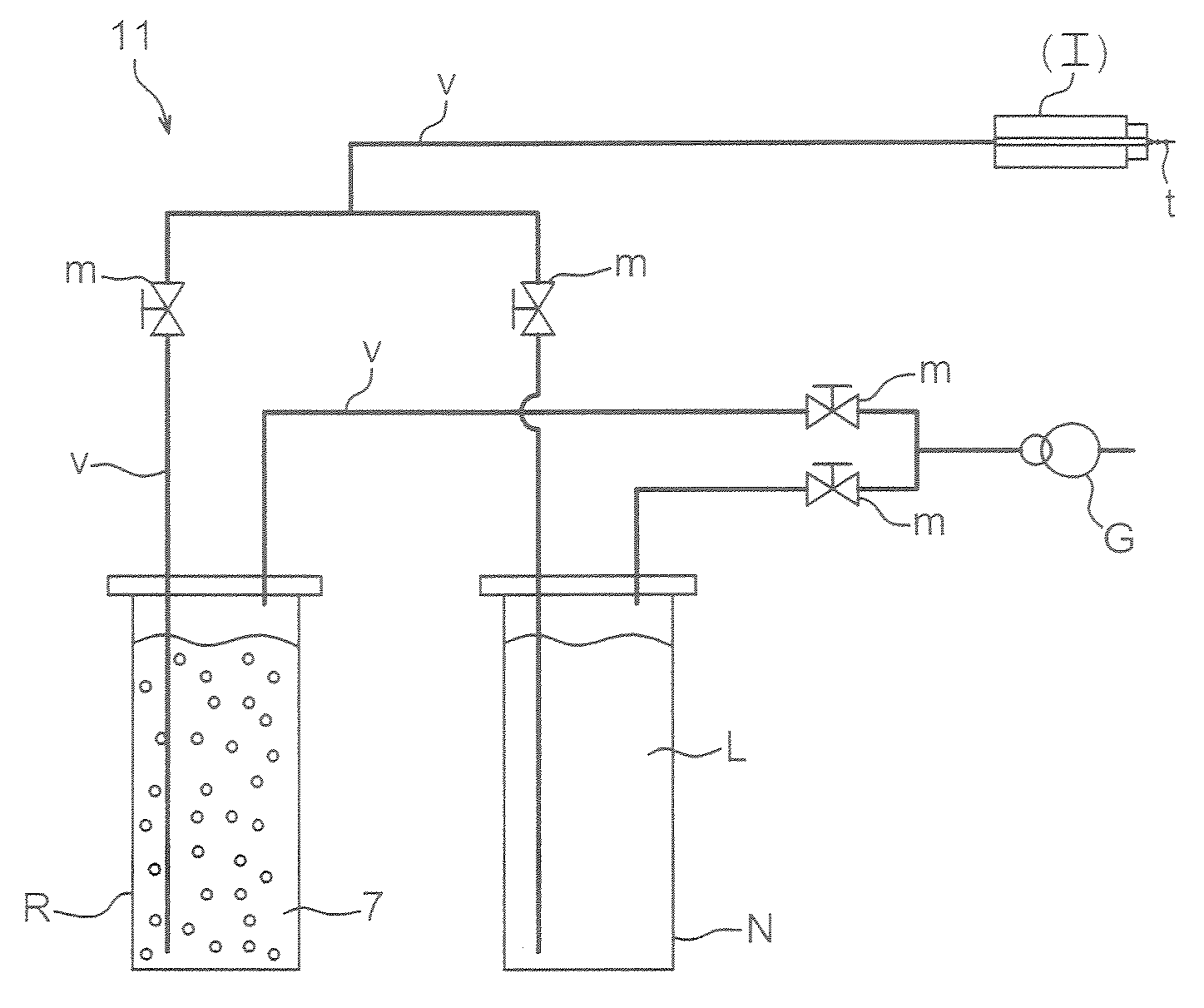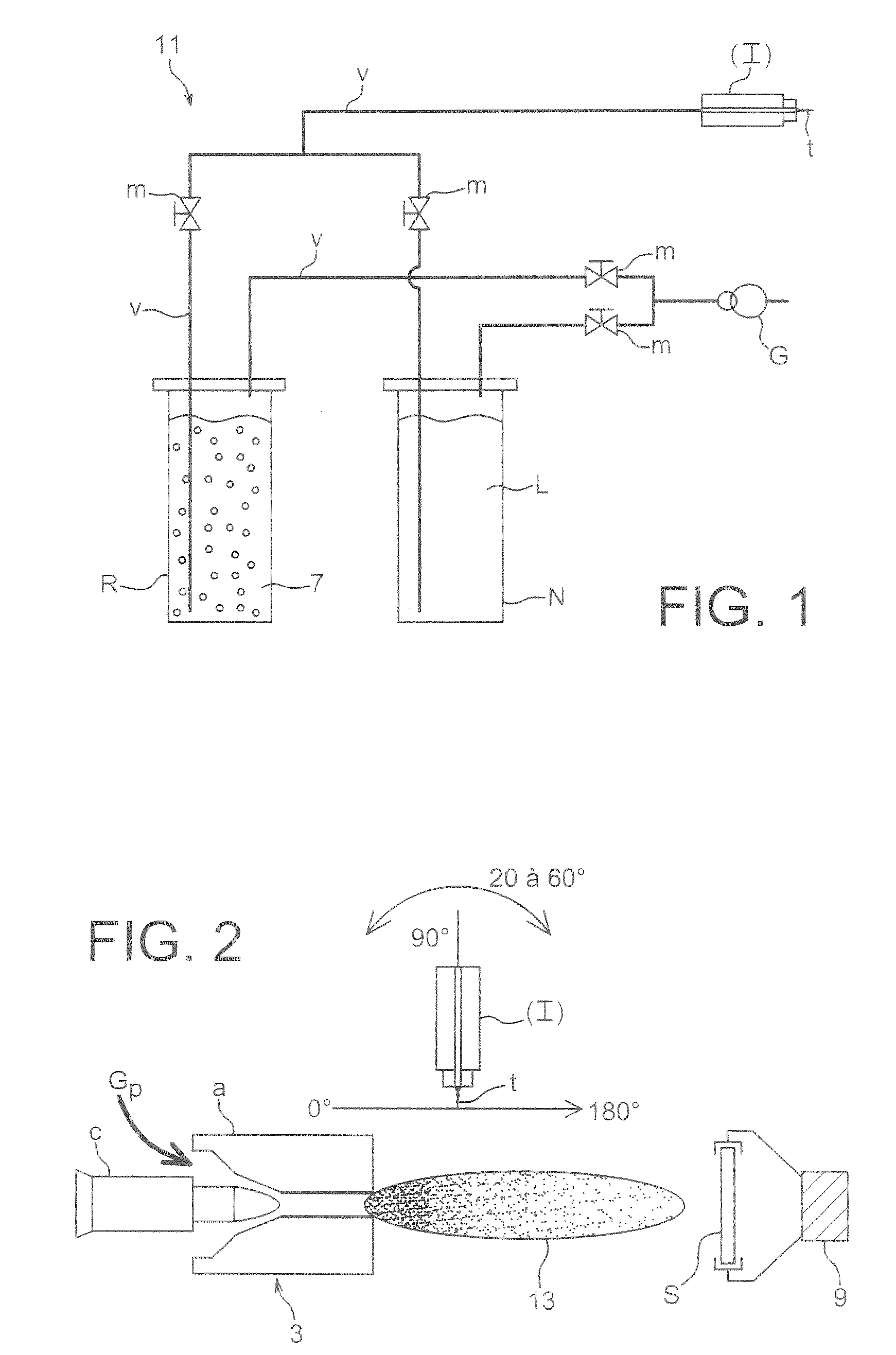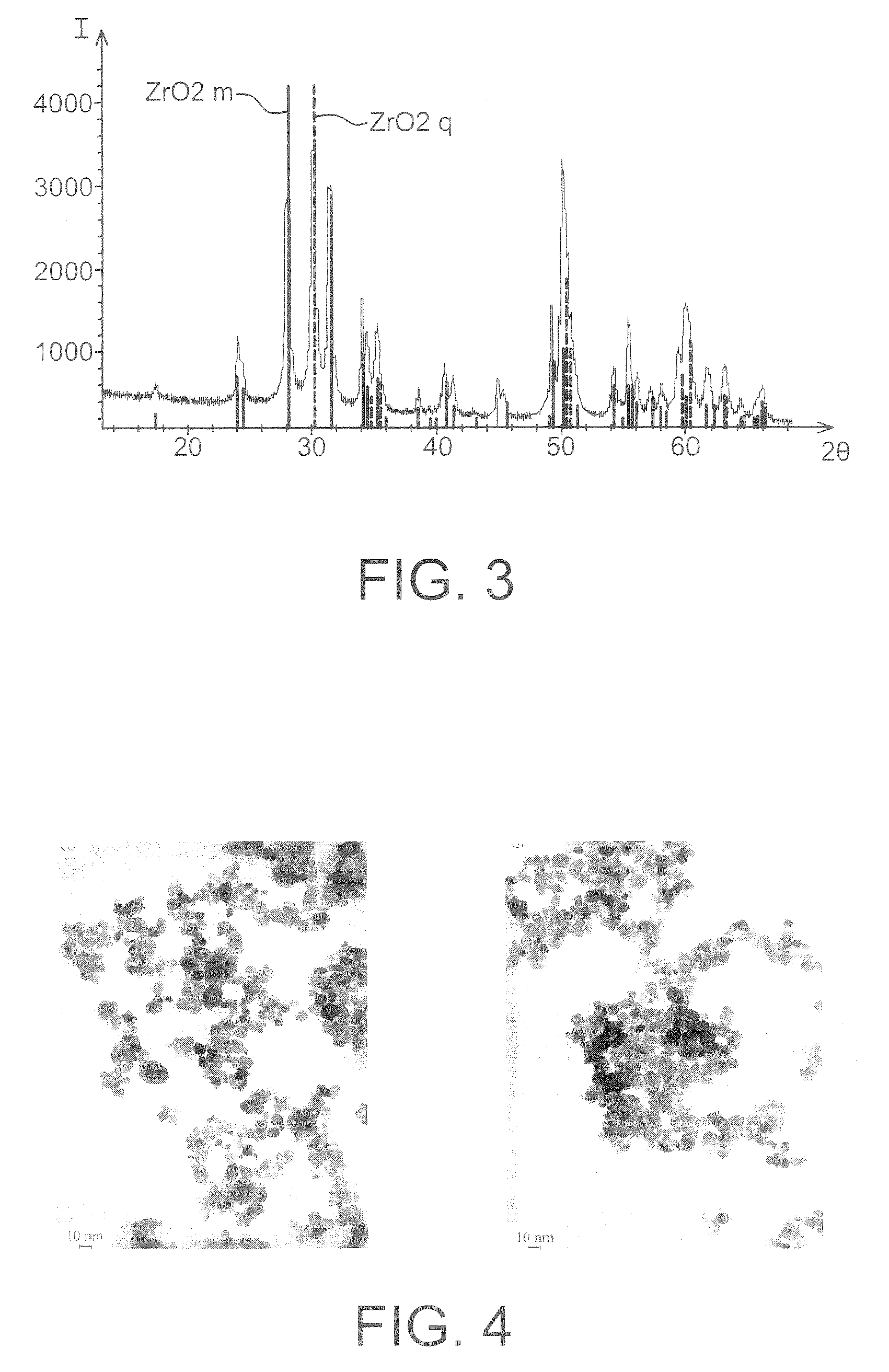Nanosturctured Coating and Coating Method
- Summary
- Abstract
- Description
- Claims
- Application Information
AI Technical Summary
Benefits of technology
Problems solved by technology
Method used
Image
Examples
example 1
Method of the Invention and Coating Obtained from a Zirconia Sol
[0136]An aqueous 10% zirconia (ZrO2) sol was injected into an argon / hydrogen (75 vol % Ar) transferred (blown)-arc plasma.
[0137]The experimental set-up used for producing the nanostructured zirconia coatings is shown in FIGS. 1 and 2. It consisted of:[0138]a Sulzer-Metco F4 VB (trade mark) DC plasma torch (3) fitted with an anode of 6 mm inside diameter;[0139]the device for injecting the liquid, described in FIG. 1; and[0140]a device (9) for fixing and for moving the substrate to be coated relative to the torch at a given distance (FIG. 2).
[0141]With regard to the injection device, this comprised a container (R) containing the colloidal sol (7) and a cleaning container (N) containing a cleaning liquid (L) for cleaning the injector and the pipework (v). It also included pipes (v) for conveying the liquids from the containers to the injector (I), pressure-reducing valves (m) for adjusting the pressure in the containers (p...
example 2
[0155]The zirconia sol of Example 1, having specific (dispersion and stabilization) properties of the present invention, was sprayed in a plasma jet as described in Example 1.
[0156]This zirconia sol consisted of nanoparticles crystallized in monoclinic phase and in tetragonal phase. The size distribution was obtained from TEM micrographs of the zirconia sol. The mean diameter of the zirconia particles was 9 nm. The micrograph on the right in appended FIG. 4 is a TEM micrograph taken on this zirconia sol used. The bar at the bottom left indicates the scale of the micrograph, here representing 10 nm in the micrograph.
[0157]The coating produced by plasma spraying said sol according to the method of the invention consisted, using TEM surface and thickness analysis, of zirconia nanoparticles having a morphology similar to those of the initial sol and with a mean diameter of 10 nm. These measurements can be deduced from the appended FIGS. 6a and 6b. The bar at the bottom right of these mi...
example 3
Preparation of a Nanoparticle Sol
[0162]This example illustrates one of many ways of preparing a nanoparticle sol that can be used for implementing the present invention.
[0163]A colloidal solution of titanium oxide TiO2 was prepared by adding, drop by drop, a titanium tetraisopropoxide solution (0.5 g) dissolved in 7.85 g of isopropanol to 100 ml of a dilute hydrochloric acid solution (pH=1.5) with vigorous stirring. The mixture obtained was kept magnetically stirred for 12 hours.
[0164]Transmission electron microscopy observations showed a mean diameter of the colloids of about 10 nm. The X-ray diagram was characteristic of that of titanium oxide in anatase form.
[0165]The pH of this sol was about 2 and the mass concentration of TiO2 was brought to 10% by distillation (100° C. / 105 Pa).
[0166]Before being used in the method of the invention, the colloidal nanoparticle solution could be filtered, for example to 0.45 μm.
PUM
| Property | Measurement | Unit |
|---|---|---|
| Temperature | aaaaa | aaaaa |
| Thickness | aaaaa | aaaaa |
| Angle | aaaaa | aaaaa |
Abstract
Description
Claims
Application Information
 Login to View More
Login to View More - R&D
- Intellectual Property
- Life Sciences
- Materials
- Tech Scout
- Unparalleled Data Quality
- Higher Quality Content
- 60% Fewer Hallucinations
Browse by: Latest US Patents, China's latest patents, Technical Efficacy Thesaurus, Application Domain, Technology Topic, Popular Technical Reports.
© 2025 PatSnap. All rights reserved.Legal|Privacy policy|Modern Slavery Act Transparency Statement|Sitemap|About US| Contact US: help@patsnap.com



